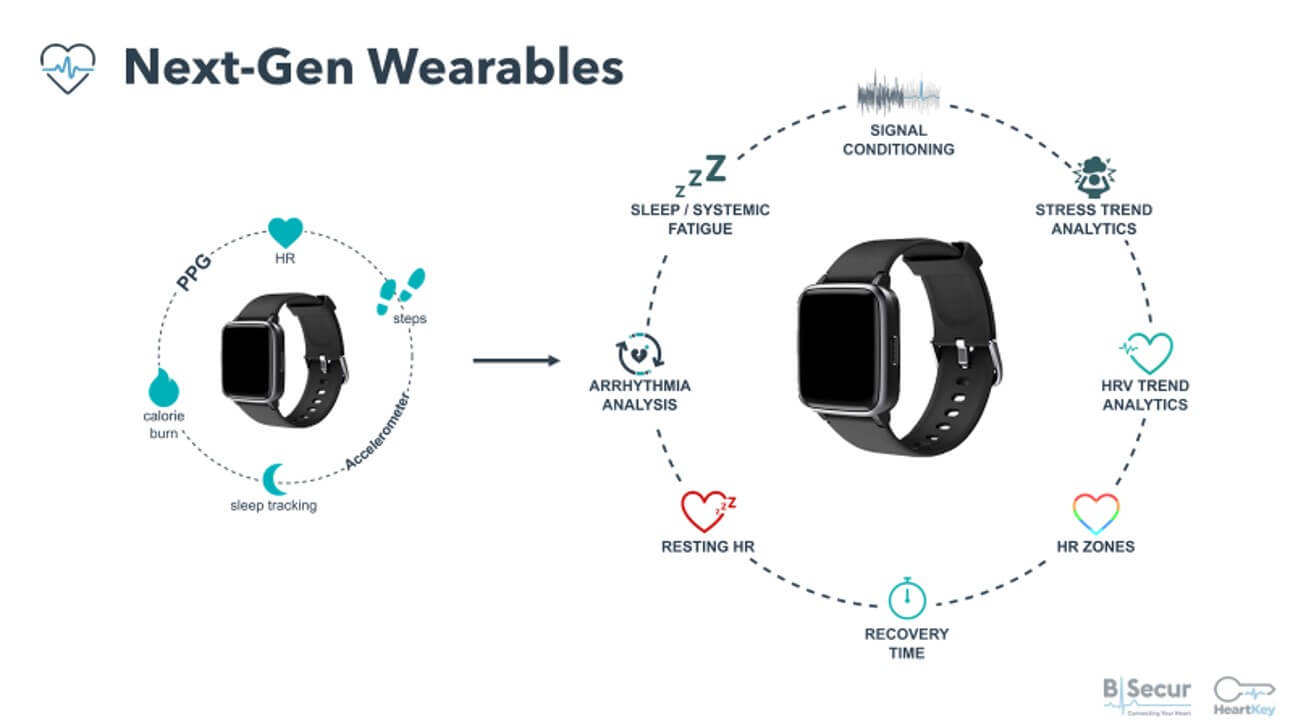By Ben Carter, Chief Commercial Officer at B-Secur |
Wearables are more popular than ever: a record 527 million were sold in 2020, up from 384 million in 2019, according to research firm Strategy Analytics. It was the first time that global wearable sales topped half a billion, and analysts expect that wearable devices will overtake smartphone sales by the end of the decade.
People already use smartwatches and smart wristbands to track their steps, sleep and calories burned. The public’s greater awareness of the impact of lifestyle behaviors has led to a broader interest in preventative care: healthcare that prevents illness rather than treating a condition which has already developed.
Accelerated by the COVID-19 pandemic, healthcare is rapidly shifting from a traditional doctor-centric treatment model to an open consumer-driven movement. Personal health technologies, especially consumer wearables, are predicted to play a significant role in preventative healthcare.
The first step? Catching the early (hidden) signs.
The Heart Disease and Stroke Epidemic
There is a common misconception that strokes only affect elderly people when, in fact, they can happen to anyone and at any stage of their life.
Atrial fibrillation (also known as AFib or AF) can cause blood to pool in the heart’s upper chambers and form blood clots. Depending on the location of this clot, it could break free from your heart, travel to your brain and potentially cause an ischaemic stroke — the most common type of stroke. If you have atrial fibrillation, you are five times more likely to have a stroke.
According to the World Health Organization, cardiovascular diseases (CVDs) are the leading cause of death globally. An estimated 17.9 million people died from CVDs in 2019, representing 32% of all global deaths; of these deaths, 85% were due to heart attack and stroke.
The good news: many CVD-related deaths are preventable. Monitoring people’s hearts and catching the early signs of CVD, such as AFib, are crucial to prevent the heart conditions from deteriorating. But CVDs are usually detected when people get their heart condition checked via an electrocardiograph (ECG or EKG) at a hospital. We need a more preventative and proactive approach toward monitoring everyday heart health.
Wearables can play a revolutionary role in preventative healthcare. Users can take recordings and monitor their health 24 /7 via their wearable devices. With the right, sufficient technologies embedded in the device, they don’t have to book an appointment and try and get a Holter monitor; their device provides enough accuracy to start a clinical journey.
EKG Technology: Breaking Through the Current Wearable Limits
Optical-enabled technologies like photoplethysmography (PPG) have been dominating the consumer wearable market. Optical sensors can monitor continuous heart rate (HR), so optical heart rate monitors alone are useful for workouts and everyday activities. But when it comes to accuracy in heart health monitoring and detecting heart disease, cardiologists and general practitioners will not trust anything other than an EKG.
EKG is the gold standard for anything related to cardiac or heart health. Additionally, one’s EKG signal is unique to them and is the true signal to determine life indicators such as stress, energy expenditure, AFib, etc.
Integrating with everyday wearable devices, EKG opens a whole new world of preventative daily heart health management, including medical-grade heart rates, physiological stress, arrhythmia detection, heart rate variability, energy expenditure, systemic fatigue, respiration and more.
The next-generation wearable devices call for high-performing sensing capabilities as well as advanced features for identification, wellness, and health monitoring. By augmenting a device with an EKG, we can layer on more powerful insights into sinus rhythm, true heart rate variability, physiological stress and more.

It is the combined power of PPG and EKG technologies that brings a true end-to-end biosensing solution to next-gen devices, enriching peoples’ lives and building a more preventative and proactive healthcare model. It is the evolving of existing tech with cutting-edge EKG technology that enables daily medical-grade healthcare management.
Driving the Future of Preventative Healthcare
We are experiencing one of the greatest reactive healthcare events in human history as we continue to fight COVID-19. The extra pressure on our healthcare system highlights why now more than ever it is important to relieve additional stressors through preventative measures
Preventative care enables a mechanism to reduce the burden during normal times so that next time we experience a crisis like this, we might have the bandwidth to handle things without the same impact on our lives.
More importantly, preventative care puts a greater level of control over health and wellness into the hands of consumers and clinicians through wearable technology.
Building on the momentum of telehealth and remote monitoring witnessed in the last year, wearables are providing a preventative approach to individual health and wellness. In the case of heart disease and stroke prevention, this opportunity to generate a health summary including heart rate, physical activity, and trends creates a comprehensive personalized care plan that the patient can control, and the clinician can track.
 About the Author
About the Author
Ben Carter is the Chief Commercial Officer at B-Secur, a next-gen biometric technology company creating software solutions that use ECG/EKG biometrics for user authentication and beyond, to health and wellness metrics.












